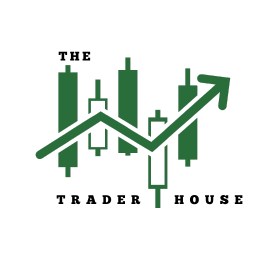
Here’s Why The OECD Lowered Growth Predictions for U.S.
The Organization for Economic Co-operation and Development (OECD) has recently updated its global economic growth forecast for 2025, specifically citing the impact of U.S. trade tariffs. As a new trader, understanding the interplay between global events and market movements is crucial for making informed decisions.
OECD’s Revision of Economic Growth
The OECD now projects global GDP growth to moderate from 3.2% in 4Q 2024 to 3.1% in 2025 and 3.0% in 2026. This downward revision is largely due to increased trade barriers and heightened policy uncertainty, which are weighing on investment and household spending.
In the US, GDP growth is anticipated to slow from 2.8% in 2024 to 2.2% in 2025 and further to 1.6% in 2026. The OECD attributes this deceleration to the adverse effects of heightened tariffs and ongoing trade disputes initiated by the U.S. administration.
The OECD’s report emphasizes that increased trade barriers are restricting global trade. When countries do not trade freely, businesses reliant on imports and exports may face challenges, leading to slower growth. This scenario can result in reduced investment and lower consumer spending, both vital factors for robust stock performance.
Impact on Key Sectors
The imposition of tariffs has significant ramifications for various industries:
- Manufacturing and Export-Driven Companies: Firms that rely on international trade may face higher costs and lower ability to compete in the market, which could lead to lower profit margins and stock valuations. (Fitch Ratings)
- Commodities: The OECD warns that protectionist trade policies, including potential tariffs on commodities like copper, could lead to depressed future demand and price volatility.
For instance, copper prices have recently surged, with the metal up 25% this year, reaching $4.99 per pound. Analysts caution that this rally may be unsustainable due to potential tariffs and a weakening global economic outlook.
How Does This Affect You as a Trader?
For new traders, grasping the impact of these macroeconomic factors on the stock market is essential. When the OECD lowers its growth predictions, it can create uncertainty, leading to fluctuations in stock prices. These fluctuations may present both risks and opportunities.
Upon encountering news like the OECD’s forecast, analyze the stocks you follow. Identify sectors that might be more affected by trade tensions. For example, companies heavily reliant on overseas suppliers might face challenges, while businesses less dependent on international trade could benefit.
Keep an Eye on Trade Policy
Trade policies significantly influence market dynamics. As tariffs are imposed or lifted, they can alter the landscape for businesses and investors. If you’re trading in companies sensitive to tariffs—such as manufacturers or import-export firms—staying updated on these policies will aid in making better trading decisions.
Be proactive. Seek news updates or analyses from reputable sources like CNBC. This information will enhance your understanding and help you think like a trader.
Analyze Different Sectors
Given the OECD’s report, some sectors may show more resilience than others. For instance, technology companies might be less affected by tariffs, while construction and manufacturing sectors could experience direct pressures. When sectors react differently to economic forecasts, adjusting your trading strategy accordingly is prudent.
Instead of merely following the news, analyze it. Ask yourself:
- How does this affect my portfolio?
- Should I hold my positions, buy, or sell?
By reviewing these questions analytically, you develop a framework to think like a trader.
Learning Resources for Beginners
As a newcomer to trading, accessing additional learning resources can be beneficial. Many online platforms offer courses tailored for beginners, such as our own trading course, which can enhance your understanding of the stock market’s nuances.
Exploring insightful blogs and online courses can also provide guidance. Engaging with community groups or forums where traders share experiences and insights can further enrich your learning journey.
Stay Updated and Connected
In trading, knowledge is power. By staying updated on events like the OECD’s economic growth forecast and its relation to U.S. trade tariffs, you position yourself to make informed trading decisions.
Monitor related news and developments. For real-time updates, consider subscribing to financial news platforms and following trusted social media accounts. Join us on Facebook, Instagram, TikTok, Pinterest, and YouTube for insights and tips.
The OECD lowering its growth predictions raises important considerations for new traders. Understanding how U.S. trade tariffs influence the global economy and stock markets can help you in make informed investments.
In the world of trading, knowledge truly is power. By staying updated on events, like the OECD’s economic growth forecast and its relation to U.S. trade tariffs, you position yourself to make informed trading decisions.
Also, keep an eye on related news and developments. For real-time updates, consider subscribing to financial news platforms and following trusted social media accounts. Join us on Facebook, Instagram, TikTok, Pinterest, and YouTube for insights and tips.sights and tips.
To stay ahead in your trading journey, think critically about the news and don’t hesitate to explore additional resources. If you want to dive deeper and learn effectively, consider joining our trading course today. Click the link to Start Learning Now and get equipped with the knowledge you need to thrive in the stock market!k market!
Stay informed, stay curious, and happy trading!
Source link: CNBC









One Comment
Pingback: